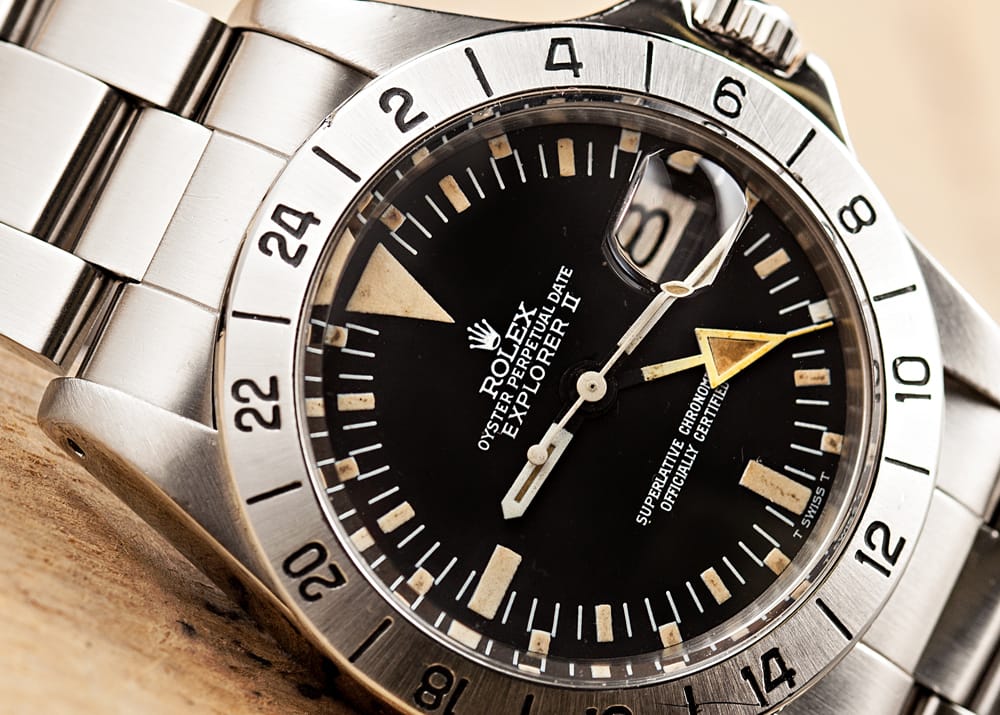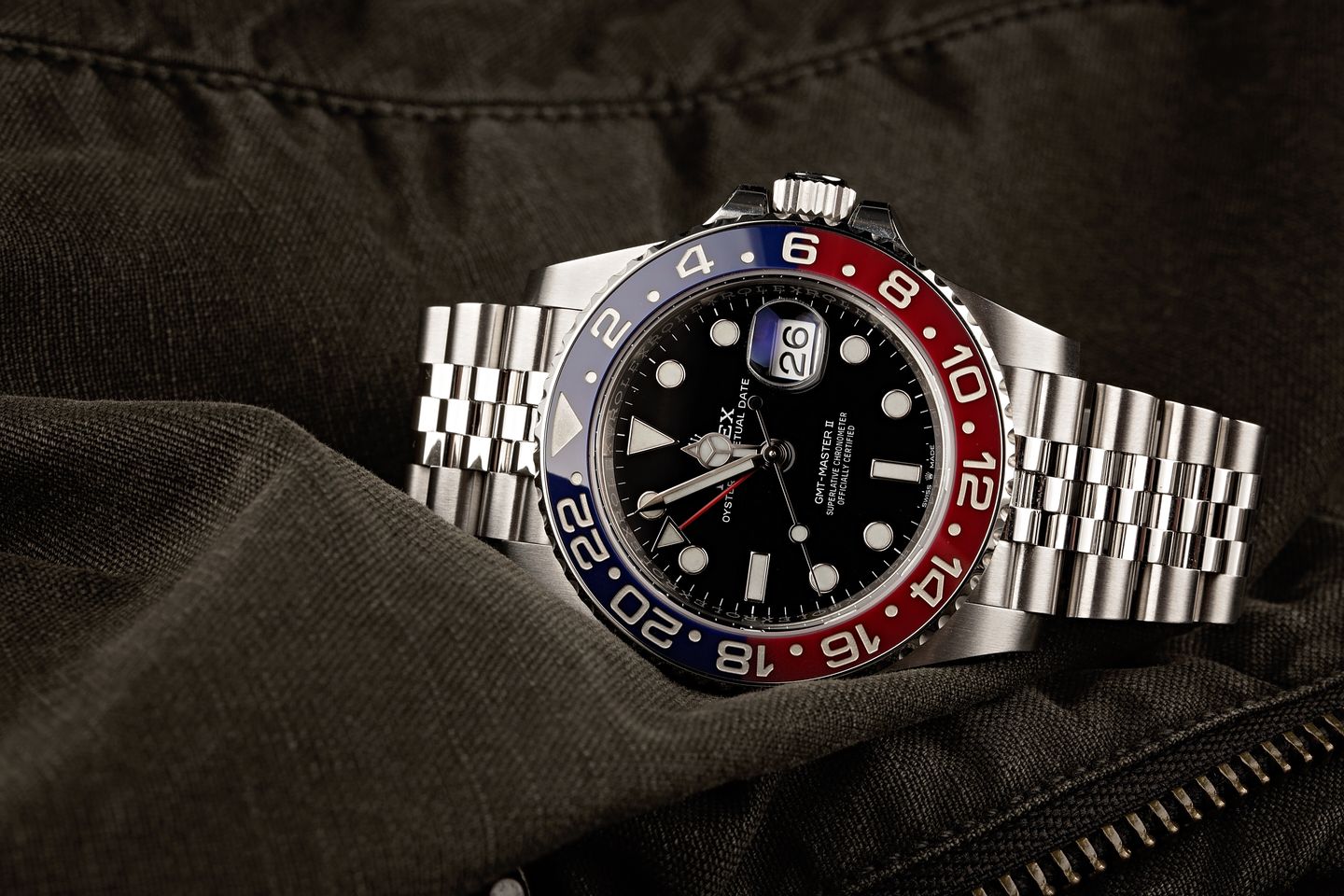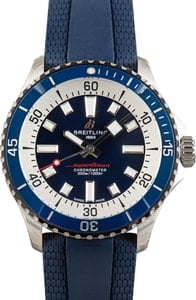The history of the Rolex Explorer II stands as a remarkable display of watchmaking creativity and daring exploration. Introduced in 1971, this robust watch was crafted to cater to the requirements of cave explorers and expeditions to polar regions. With its distinctive 24-hour hand and fixed bezel, the Rolex Explorer II quickly became an essential tool for adventurers navigating extreme environments. Throughout the years, it has evolved, yet it has kept its original identity, establishing itself as a core piece in Rolex’s celebrated line of sports watches and captivating the interest of both explorers and watch lovers.
The Origins of the Rolex Explorer II
The Rolex Explorer II was unveiled in 1971, standing out as a specialized tool watch crafted to cater to the distinct requirements of cave explorers and adventurers who journeyed into harsh and extreme conditions. This watch was developed in reaction to the obstacles encountered by speleologists and polar explorers, who frequently struggled to differentiate between day and night due to prolonged periods of darkness or continuous daylight.
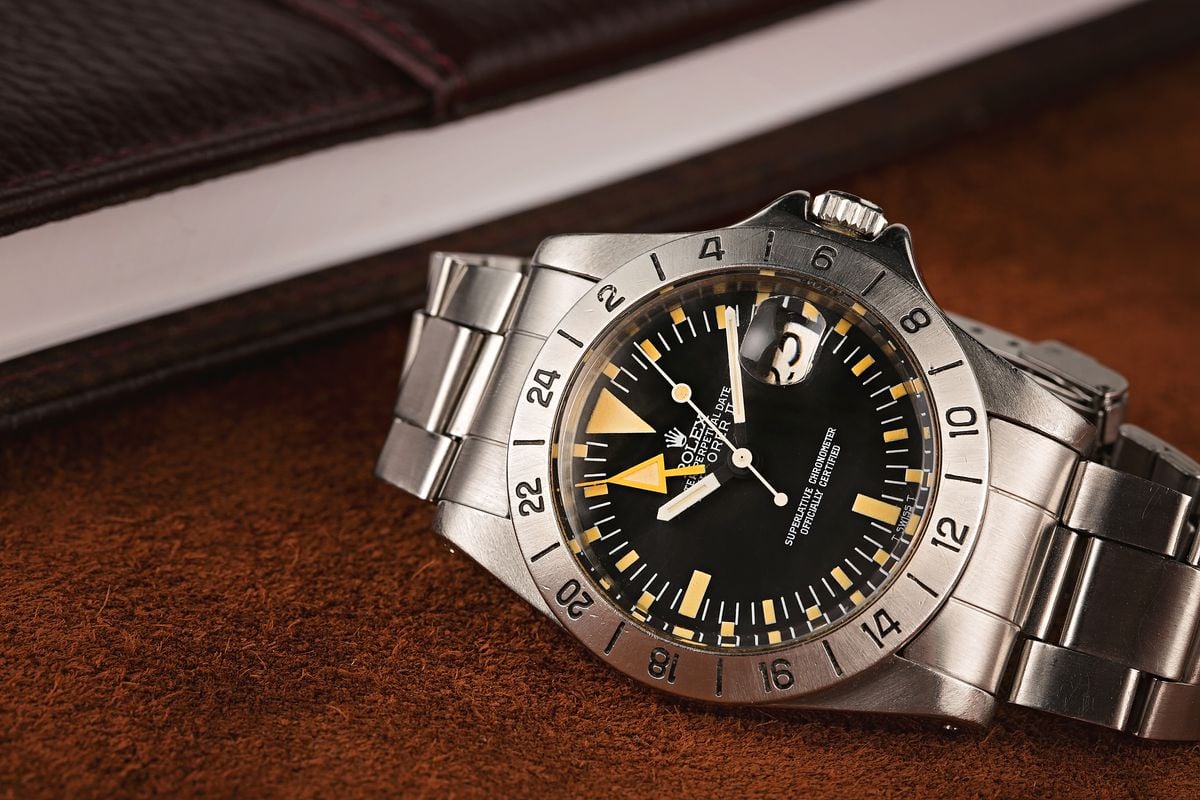
At its heart, the Explorer II was designed to assist adventurers in distinguishing between day and night hours, a vital aspect for preserving their circadian rhythms in challenging situations. This functionality was introduced by incorporating a fixed 24-hour bezel paired with an extra 24-hour hand, a characteristic that would later be recognized as a signature of the watch.
The Explorer II made its debut with the Explorer II reference 1655, a model that would later achieve legendary recognition among watch collectors. This initial version laid the groundwork for what would evolve into a celebrated series of Rolex sports watches, blending durability with specialized features designed for rugged exploration.
The Evolution of the Rolex Explorer II
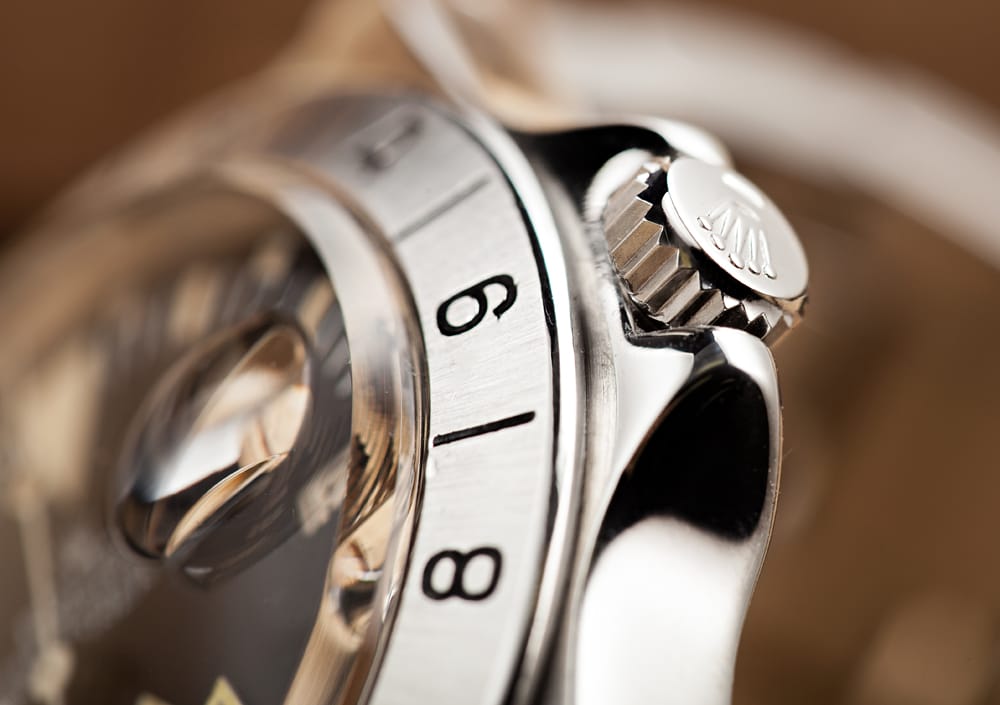
Since its creation, the Rolex Explorer II has experienced major changes, with each new version introducing updates and new features that remain faithful to its daring nature. Starting as a specialized instrument designed for cave exploration, it has evolved into a versatile high-end sports watch. This transformation mirrors Rolex’s commitment to continuous improvement and flexibility in response to shifting demands and advancements in technology.
1971: The Birth of the Explorer II (Ref. 1655)
The original Rolex 1655, debuted with a distinctive design that set it apart from other Rolex models. Its standout element was the vibrant orange 24-hour hand, which soon earned the nickname “Freccione” (Italian for “arrow”). This hand worked together with the fixed 24-hour bezel to differentiate between day and night.
The reference 1655 had a 39mm stainless steel case, which was larger than the typical smaller sizes available at the time. Its dial was designed for easy legibility, featuring large, luminous markers and a date window at 3 o’clock. Although it initially had slow sales, the Explorer II 1655 eventually gained popularity and is now highly valued by collectors for its distinctive look and historical importance.
1985: The Transitional Period (Ref. 16550)
In 1985, the Rolex 16550 was unveiled, marking a pivotal moment in the history of the Explorer II series. This watch introduced a series of design changes that would define its look for years to come. A key feature was the addition of white and black dial colors, departing from the Explorer II’s original black dial design.
The ref. 16550 also introduced larger hour markers and the famous Mercedes-inspired hands, making the watch easier to read. From a technical standpoint, it featured the latest Caliber 3085 mechanism and a sapphire crystal, boosting its toughness and functionality. This reference is highly sought after by collectors for its limited production run and the unique way its white dials develop a cream-colored patina over time.
1989: Refinement and Modernization (Ref. 16570)
The Rolex 16570, launched in 1989, took the Explorer II’s design and features to the next level. This version kept the stylish look of its predecessor while adding several technical enhancements. The movement was upgraded to the Caliber 3185, which improved both precision and dependability.
Rolex also made the watch more robust by choosing stronger materials and boosting its water resistance. The 16570 was in production for over two decades, lasting until 2011, and experienced a series of gradual updates, such as alterations to the luminous materials and slight changes to the dial. Its enduring appeal and consistent design position it as a key piece in Rolex’s collection of sports watches.
2011: The Modern Era (Ref. 216570)
In 2011, Rolex celebrated a major achievement in the history of the Explorer II with the launch of the Rolex 216570. This edition introduced the most significant updates to the series since its beginning. The watch’s case was made larger at 42mm, enhancing its visibility on the wrist and making it easier to read.
Rolex brought back the iconic orange 24-hour hand, a nod to the original 1655 model. The watch’s dial saw a refreshed look with larger hour markers and hands, now coated with Rolex’s exclusive Chromalight luminescent material for better visibility in low light conditions. On a technical level, the 216570 was equipped with the latest Caliber 3187 movement, which provided better magnetic resistance and shock absorption.
2021: Latest Innovations (Ref. 226570)
In 2021, aligning with the Explorer II’s 50th birthday, Rolex unveiled its newest version: reference 226570. This model retains the 42mm case size but adds gentle enhancements to both its functionality and appearance. A key change is the debut of the Caliber 3285 movement, which brings greater accuracy and a longer power reserve.
The Rolex 226570 boasts new lug designs and a slimmer build, making it more comfortable to wear without compromising on its durable character. Rolex also made subtle changes to the dial, improving readability and preserving the Explorer II’s unique look and style. This newest model is a careful progression, paying tribute to the watch’s history while adopting the latest developments in watchmaking technology.
Key Features and Design Elements
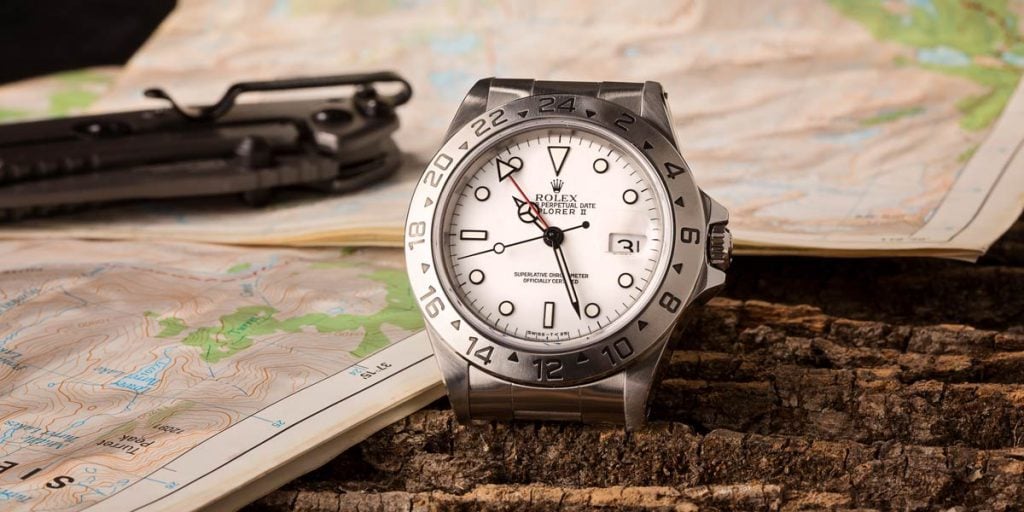
The Rolex Explorer II has consistently stood out due to its special blend of practicality and tough sophistication. Throughout its history, specific important characteristics and design aspects have shaped the Explorer II, evolving over time yet keeping its fundamental identity. These components not only enhance the watch’s usefulness for explorers and adventurers but also provide it with a unique look that distinguishes it among luxury sports timepieces.
24-Hour Fixed Bezel
The fixed 24-hour bezel stands out as a key characteristic of the Rolex Explorer II. Unlike the rotating bezels seen on other Rolex sports watches, the Explorer II’s bezel doesn’t move, acting as a guide for the watch’s 24-hour hand. This design was initially created to assist cave explorers and those on polar expeditions in telling time in places where the usual day-night cycle is not visible.
Over time, the look of the bezel has been refined without losing its essential function. Early models had numerals etched in black paint, while later models used more sophisticated engraving methods and clearer markings. Despite these cosmetic changes, the bezel’s role in the Explorer II’s identity and utility has stayed the same, highlighting its significance.
Dual Time Zone Functionality
The Explorer II’s unique ability to display two time zones, highlighted by its special 24-hour hand, has earned it popularity among both travelers and professionals who need to manage differing time zones. This additional hand, usually in a vibrant orange or red color, completes a full rotation every 24 hours, indicating the current hour on the fixed bezel.
In the latest versions of the Explorer II, the 12-hour hand can be adjusted on its own, enabling the wearer to monitor two time zones at once. This feature, along with the date function, renders the Explorer II a flexible companion for those who travel internationally. Whether it’s used to differentiate between day and night or to keep track of a second time zone, this capability showcases Rolex’s dedication to developing watches that are both practical and versatile.
Durability and Reliability
Since its creation, the Rolex Explorer II was engineered to endure severe conditions, mirroring its role as a companion for explorers and adventurers. The watch’s body is made from Oystersteel, a material resistant to corrosion created by Rolex, guaranteeing its toughness in demanding settings. The selection of this material enhances the watch’s strength while keeping its sophisticated look.
Water resistance has been a primary attribute of the Explorer II throughout its history. The latest versions offer water resistance to 100 meters (330 feet), making them ideal for activities like swimming and snorkeling. This feature, along with the watch’s solid build, ensures that the Explorer II can withstand the challenges of daily use and more daring activities.
Distinctive Aesthetics
The Explorer II’s look has changed over the years, yet some parts have stayed the same, contributing to its iconic status. The orange 24-hour hand, which was first seen in the original 1655 and brought back in newer models, is probably the most recognized part. This hint of color not only serves a functional purpose, but it also gives the watch a standout feature.
The dial design has seen different designs, from the unique markers in the 1655 to the more classic designs of later models. But every design offers excellent legibility, which is very important for a tool watch. The Rolex Mercedes hands, which were introduced in the 1980s, have become a key part of the watch’s look. Over time, Rolex has improved these parts, finding the right balance between a strong tool watch identity and a greater sense of luxury and elegance, showing how it’s grown from a specialized watch to a timepiece that can seemingly do it all.
its aesthetics and wearability. Available in both white and black dial variants, this latest model continues the Explorer II’s legacy of combining robust functionality with refined luxury. Its reception in the market has been positive, with many appreciating Rolex’s approach of evolution rather than revolution for this iconic model.
Cultural Impact and Endorsements
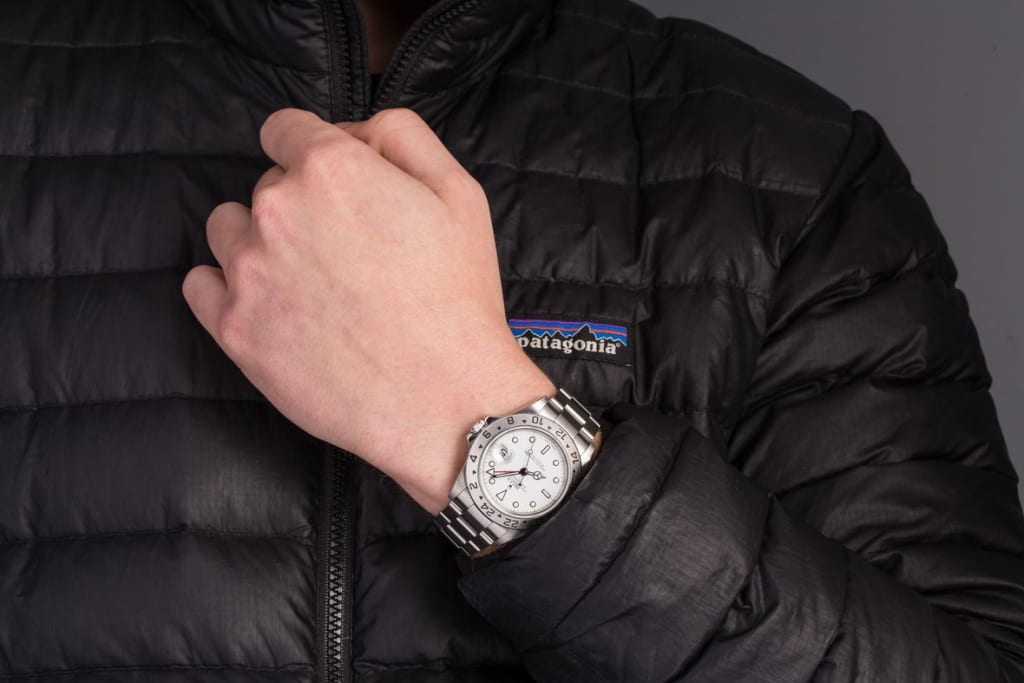
The Rolex Explorer II, with its rich history and association with adventure, has made a significant impact on popular culture and garnered notable endorsements. Its unique design and functionality have made it a favorite not only among explorers and adventurers but also celebrities and watch enthusiasts. The Explorer II’s appearances in various media and its adoption by high-profile individuals have contributed to its enduring popularity and iconic status.
The watch has been featured in various documentaries and TV shows about exploration and outdoor adventures, cementing its reputation as a timepiece for the bold and adventurous. These media appearances have significantly impacted the Explorer II’s popularity and public perception, elevating it from a specialized tool watch to a symbol of adventure and refined taste. The watch’s distinctive design makes it easily recognizable on screen, further enhancing its cultural cachet.
While Rolex typically doesn’t engage in traditional celebrity endorsements, the Explorer II has found favor among many high-profile individuals, adding to its prestige and desirability. Notable wearers have included famous explorers, athletes, and entertainers, each bringing their own cachet to the watch.
For instance, renowned mountaineer Ed Viesturs, known for climbing all 14 of the world’s 8,000-meter peaks without supplemental oxygen, has been spotted wearing an Explorer II. This authentic use by a true explorer reinforces the watch’s credentials as a reliable tool for extreme conditions.
Modern-Day Explorer II
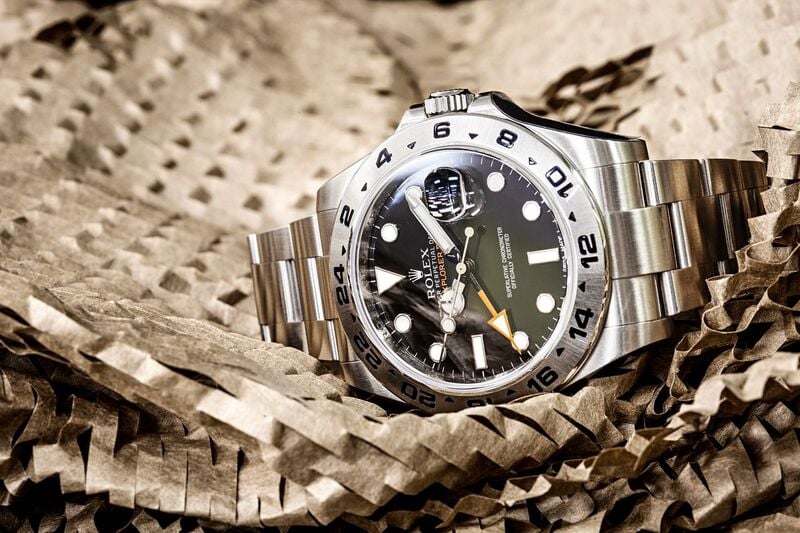
The Rolex Explorer II keeps progressing, keeping its daring nature while adopting the latest advancements in watchmaking. The latest Explorer II models mix the watch’s deep history with modern functionalities, attracting a broad spectrum of watch lovers, from experienced explorers to city dwellers. Let’s delve into the present condition of this legendary watch and its standing in the high-end watch industry.
Current Lineup and Offerings
The latest collection of Rolex Explorer II watches, identified by the model number 226570, was unveiled in 2021. This newest version comes in two dial color options: polar white and black. Each model features the unique orange hands that are part of the Explorer II’s signature look, along with a bezel that is designed to show the time in a graduated manner, which is a hallmark of the Explorer II’s design. The watch’s case is kept at a size of 42mm, which is carefully chosen to ensure it looks striking yet is comfortable to wear.
From a technical standpoint, the Rolex Explorer II has undergone several improvements. It now uses the Caliber 3285 movement, which provides greater accuracy and a power reserve of about 70 hours. The watch is equipped with Rolex’s Chromalight display, featuring hands and hour markers that are coated in a luminescent material that emits a long-lasting blue glow. The Oyster bracelet has been enhanced with the Easylink comfort extension link, which makes it easier to adjust the bracelet’s length by about 5mm.
These contemporary models continue to uphold the Explorer II’s legacy of durability and dependability, while adding enhancements that boost its usability and visual appeal. The minor adjustments made to the watch’s case and dial design show Rolex’s dedication to ongoing refinement without altering the watch’s distinctive look.
Position in the Luxury Watch Market
The Explorer II stands out in the high-end watch sector, especially when it comes to Rolex’s line of sports watches. Although it might not enjoy the same level of fame as watches like the Submariner or Daytona, it has gained a loyal group of admirers among those who value its unique look and features.
When compared to other Rolex sports watches, the Explorer II presents a more subtle luxury. Its unchangeable bezel and the ability to display two time zones distinguish it from dive watches such as the Submariner or GMT-Master II. This distinctiveness has led to its increasing appeal, with many enjoying its mix of functional tool watch origins and elegant design.
Regarding its value as an investment, the Explorer II has demonstrated consistent growth, especially in the case of older models. Although it might not see the same extreme price swings as some other Rolex sports watches, it is a reliable option for collectors seeking a balance between comfort and the possibility of retaining value.
Collectibility and Market Value
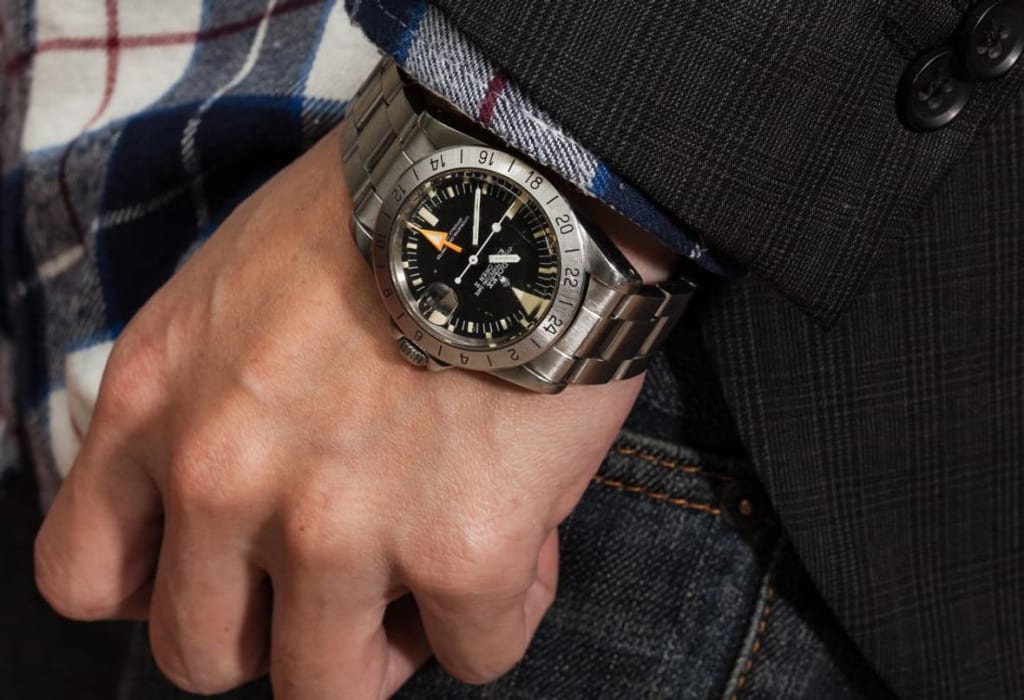
The Rolex Explorer II has steadily built a strong following in the collector’s community, with specific versions becoming increasingly desirable. Its distinctive position within Rolex’s collection, along with its deep historical background, has played a key role in its popularity among collectors and fans. Let’s explore the elements that affect the collectability and market value of both older and newer Explorer II models.
Vintage Models
Old Explorer II models, especially the earlier ones, have experienced a significant increase in their desirability and worth. The model number 1655 “Freccione” is particularly coveted, with examples in excellent condition fetching high prices. These early watches are cherished by collectors for their historical importance, distinctive features, and scarcity.
The appeal of vintage Explorer II models is influenced by their condition, authenticity, and history of ownership. Watches that retain their original dials, hands, and bracelets are especially valuable. The “rail dial” models of ref. 16550, known for their text on the lower half of the dial fitting perfectly, are in high demand because of their rarity.
Additionally, collectors value specific dial designs, like the cream-colored dials that appeared on some white dial models of ref. 16550 due to a manufacturing quirk. These unique traits, along with the watch’s connection to exploration and adventure, make vintage Explorer II models appealing to collectors looking for both historical value and potential investment returns.
Current Market Trends
Lately, the demand for both classic and contemporary Explorer II models has been robust. Classic references, especially those in excellent condition like the 1655 and 16550, have seen a notable rise in value. This pattern mirrors a wider fascination with classic Rolex sports watches and an increasing admiration for the Explorer II’s distinctive look and background.
Contemporary Explorer II models have also performed well in the market. Although they might not undergo the extreme price swings seen in some other Rolex sports watches, they have demonstrated consistent growth and high demand. The Explorer II’s relative ease of availability has played a role in its increasing appeal to collectors and fans.
Looking forward, the Explorer II is expected to continue its strong presence in the market. The ongoing popularity of Rolex sports watches, along with the Explorer II’s unique characteristics and history, points to a favorable future for both classic and modern versions. Nonetheless, as with any luxury watch investment, potential purchasers should consider aspects like condition, genuineness, and prevailing market conditions when evaluating the value of Explorer II models.
Conclusion
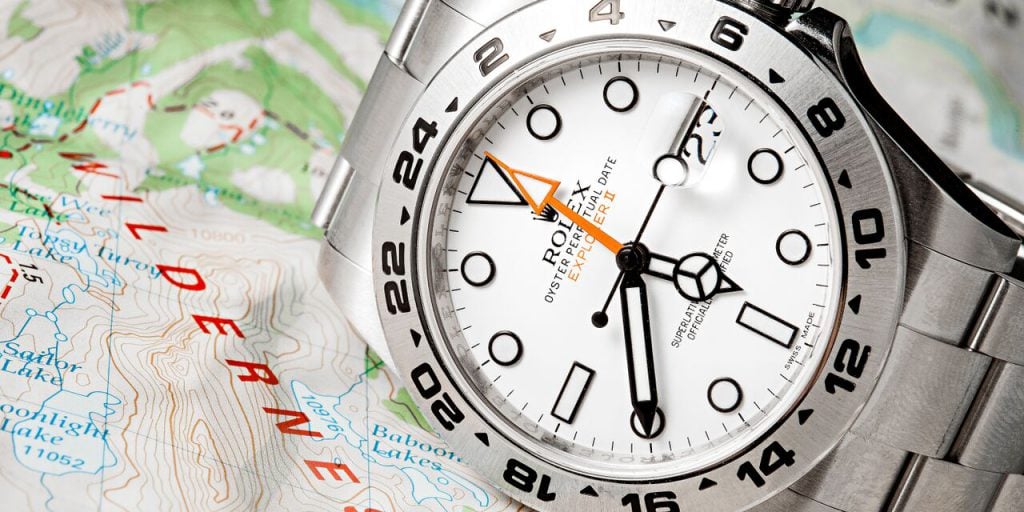
The Rolex Explorer II is a symbol of the lasting allure of timepieces designed for a specific purpose. Starting as a tool for exploring caves, it has transformed into a multifaceted luxury sports watch, yet it has always been a testament to Rolex’s dedication to accuracy, toughness, and creativity. Over the last fifty years, the Explorer II has shown not just progress in watchmaking but also shifts in what watch lovers desire and need.
Throughout its history, the Explorer II has kept its essence while adjusting to the current era. The iconic 24-hour hand and fixed bezel are still key features of its design, linking its newer versions back to its adventurous beginnings. This mix of tradition and modernity has made the Explorer II a favorite among collectors and fans, attracting those who value both its practicality and rich history.
For individuals seeking to own a piece of this watchmaking heritage, Bob’s Watches provides a great selection of Rolex Explorer II for sale. Whether you prefer the classic appeal of earlier versions or the sophisticated technology of newer models, our meticulously chosen collection has options for all tastes and budgets. As authorized sellers known for their genuine products and high standards, we encourage you to browse our selection of Rolex Explorer II watches and discover the ideal watch to go with you on your own journeys.
